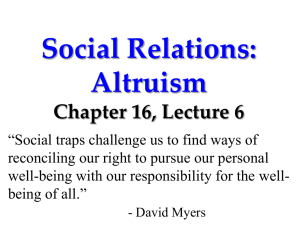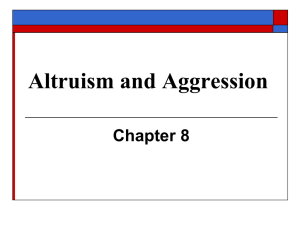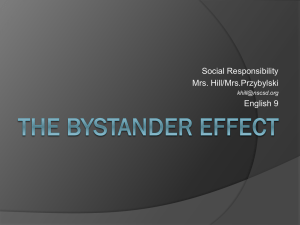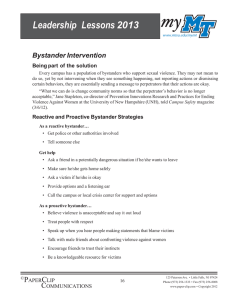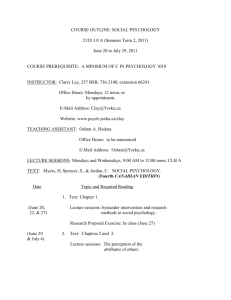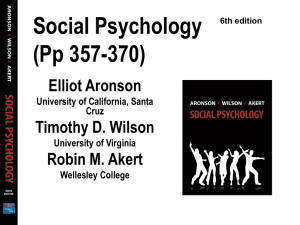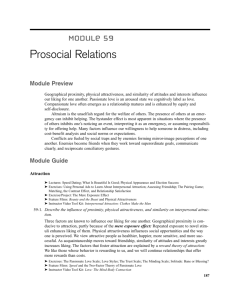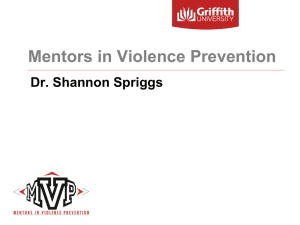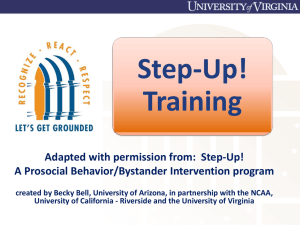File
advertisement
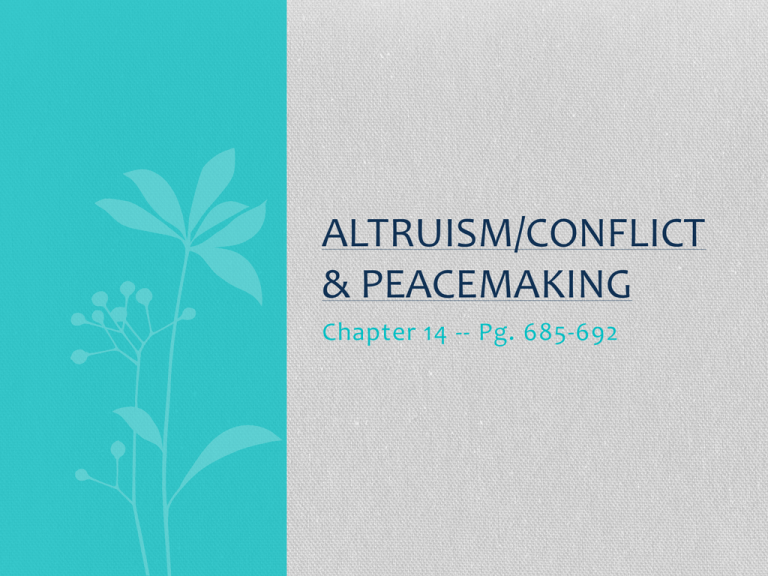
ALTRUISM/CONFLICT & PEACEMAKING Chapter 14 -- Pg. 685-692 Focus Questions 1. When are we most – and least – likely to help? 2. How do social traps and mirror-image perceptions fuel social conflict? 3. How can we transform feelings of prejudice, aggression, and conflict into attitudes that promote peace? Altruism The unselfish regard for the welfare of others Bystander Intervention •We will help only if •People in a group of the situation enables strangers are more us first to notice the likely than solitary incident. individuals to keep •Then to interpret it as their eyes focused on what they themselves an emergency. are doing or where •And finally to assume they are going! responsibility for helping. Continued… •Bystander effect: •When alone with the person in need, 40% any particular helped. bystander was •When in the presence less likely to give of five other bystanders, 20% aid with other helped. bystanders present. The Norms for Helping • Why do we help? • Social exchange theory: the theory that our social behavior is an exchange process, the aim of which is to maximize benefits and minimize costs. • Reciprocity norm: an expectation that people will help, not hurt, those who have helped them. • Social-responsibility norm: an expectation that people will help those dependent upon them. Conflict and Peacemaking •- conflict - a perceived • - many real life situations pit out incompatibility of actions, goals, or ideas individual interests against out communal •- social traps - a well-being situation in which the • - social traps challenge conflicting parties, by us to find ways of reconciling our right to each rationally pursue our personal pursuing their selfwell-being with our interest, become responsibility for the caught in mutually well-being of all destructive behavior Enemy Perceptions • The mirror image perception • As we see the person as untrustworthy and evil • They will see us the same way • This concept “mirror’s” our perceptions of one another • This mirror image perception often feeds a vicious cycle of hostity Contact • When contacting two conflicting parties of equal status by putting them together typically helps work out the problem • But with interracial conflicts their attitudes have moved into closer alignment • When there is a conflict between a heterosexual person and a homosexual the outcome of the conflict has a greater chance of being good if the heterosexual person has a family member that is homosexual Cooperation • Muzafer Sherif • Used isolation and competition to make strangers into enemies • Then used shared predicaments and goals to reconcile the enemies and make them friends. • The Conflict was reduced not by just mere contact but by cooperative contact • Superordinate goals- shared goals that override differences among perople and require their cooperation • “Common Values” are what we need !!! Communication • Mediators help each party to voice their viewpoints and to understand the other’s side. • Mediators aim to replace a win-lose orientation with a cooperative win-win orientation. •Orange Conflict Conciliation • Charles Osgood created a strategy of Graduated and Reciprocated Initiatives in tension-reduction, also known as GRIT, a strategy designed to decrease international tension. • When communication has been non existent in a conflict a small conciliatory gesture-a smile, a word of apology may work wonders • Conciliation allows both parties to begin edging down the tension ladder to a safer rung where communication and mutual understanding can begin.
